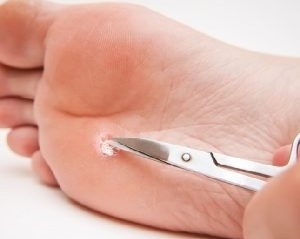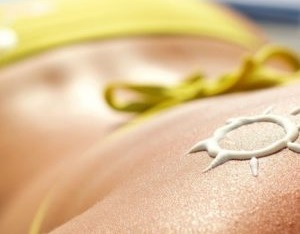A wart is not only an unpleasant skin defect, but also a complex disease that requires complex treatment. The root cause of the proliferation of papillomas is a virus dormant in the human body. Laser warts removal is a modern and safe method. It is used all over the world: rapid healing and minimal risk of recurrence allows you to remove warts in children and adults without consequences.
Modern method of wart removal
Reduced immunity is a prerequisite for the appearance of warts. The growths grow quickly and can form whole clusters. You can get infected with the papillomavirus - the root cause of the disease - through contact with someone who is sick or through their personal belongings. Whatever the reason for the appearance of warts, they must be treated. The first step in a comprehensive treatment is the removal of all formations on the skin.
Modern methods of excising warts include the removal of radio and laser waves. The destruction of neoplasms on the skin with a laser is the simplest and most painless procedure that guarantees a stable result. A mini-operation is performed under local anesthesia and without additional long-term preparation. The delicate removal of the accumulation is carried out in a specialized office and only by an experienced doctor. The steps of the procedure and the qualifications of the doctor ensure that there will be no recurrence of the disease in the near future.
What types of warts are removed with a laser?
Papillomas can differ in appearance and location on the human body. Warts affect the arms, legs, back, and face of adults and children. There is no age limit for patients with papillomatosis. With the help of laser therapy, plantar warts can be removed. These are neoplasms of the foot that develop in the horny part of the skin. On layering, the dead skin turns into a seal with a clear core visible in the center.
The laser is used to remove common warts: growths of dense and rounded structure. These warts differ in color from the skin (they are much darker). Over time, common warts increase in size and annoy a person: they bring severe discomfort and sometimes hurt.
Laser therapy is used to remove flat warts. The size of small formations does not exceed 1 cm. The growths have a flat structure and on the side look like skin-colored nodules. Flat warts do not protrude much beyond the skin and rarely cause discomfort in a person. Before prescribing a laser technique to remove the accumulation, an accurate diagnosis is determined - the wart and its type are examined.
Advantages of the procedure

During the initial examination, it is necessary to establish the condition of the neoplasm. If it is not cancerous, it can be eliminated using one of the modern methods. If we are talking about warts on the feet, then their removal takes place in several stages - these formations often have rods growing in the soft tissues. Warts on the feet constantly hurt and cause discomfort when walking. Only with the help of the laser method, the removal of these warts is carried out in one step and allows you to quickly recover from the procedure.
Root calluses are difficult to remove without subsequent relapses: simple surgical excision is ineffective. Laser therapy helps destroy all cells infected with the virus, even those that are not visible to the naked eye.
The advantages of laser therapy include: the speed of the procedure and the speed of recovery. In total, the removal of the growth takes no more than half an hour, depending on the complexity of the neoplasm and the number of warts. The minimum number of contraindications makes laser therapy universal and safe for children. It is allowed to perform the procedure from 5 years old.
The painless nature of the procedure is suitable for people with hypersensitivity: a small amount of drugs and pain relievers are used to remove the wart.
After laser therapy there are hardly any scars or hard scars left on the affected skin area. Rapid recovery and a low probability of complications are the main advantages of the procedure over other modern techniques. The innovative equipment allows a mini-operation to be performed without noticeable discomfort for the patient. The rehabilitation of the patient is carried out at home in its usual conditions.
Contraindications for this procedure
The effective technique has a number of contraindications. In preparation for the mini-surgery, the patient undergoes a full body examination. Based on the results obtained, the attending physician evaluates other treatment options and the risks to the patient.
Contraindications to laser therapy:
- rash and herpes;
- advanced dermatitis;
- high blood pressure;
- acute respiratory illnesses (the patient has a weakened immune system after previous illnesses);
- malignant diseases.

A pregnant woman should refuse the operation: if possible, laser treatment is postponed until the postpartum period. If a rash of unknown origin appears on the human body, it is necessary to postpone the removal of warts. Systemic diseases are direct contraindications to mini-surgery.
Thyroid disease prevents the use of a laser beam to remove an unpleasant wart. Sun allergy is a rare disease that does not allow the laser procedure: in such cases, the fight against warts is carried out by radiation therapy.
Severe renal and hepatic impairment is a contraindication to mini-surgery. Before using modern techniques, it is necessary to take into account all the contraindications that can lead to serious complications in an adult or a child.
How the procedure is performed
The procedure is performed under sterile conditions. Previously, the patient undergoes blood and urine tests. Based on the results obtained, the type of anesthesia used and the pain relievers that will be needed during laser therapy are determined. The non-invasive method excludes any contact with the skin: the person sits on a comfortable sofa while lying or sitting. Medication is injected into the sides of the wart, which should reduce any pain.
After 5 to 10 minutes, the injected medicine takes effect. The laser beam affects the buildup for a few minutes. After the procedure, the affected skin area is treated with special means and a bandage is applied.
A half-hour operation does not require hospitalization of the patient: immediately after laser therapy, the patient goes home alone.
Treatments and re-dressings of the skin are carried out at home. During the procedure, the possibility of bleeding is completely excluded. If there is no cut on the skin, infections or pathogenic microorganisms cannot get into the wound - secondary postoperative infection is excluded.
Rehabilitation after laser removal
The healing of the skin area affected by warts depends directly on the procedure performed. The high-tech laser is completely sterile (bactericidal). It works on the skin and does not cause inflammation - for this reason, no visible scars or scars remain on the body. On the area treated with laser, the pathogen of bacteria or viruses is completely destroyed. Immediately after the procedure, you may feel a little discomfort under the bandage, which will soon disappear.
The skin is completely restored within 2 weeks (up to a month in people with weakened immunity). A hard crust forms on the treated area: healing occurs below. Once the lower skin heals, the scab falls off without further damage.
The scab lasts about 10 days and does not cause any discomfort in humans. New skin appears in the third week after the procedure.
Home care
Home care includes periodic skin treatments. The patient treats the scab and the surrounding skin with disinfectants. The crust should never be torn off or soaked - it protects the new skin.
Due to accidental injury, fungal infection or infection may occur. Such a consequence does not allow the wound to heal, and a new wart soon appears.
Do not tan before the appearance of new skin: the scab should not be exposed to ultraviolet rays. You should not visit the sauna or solarium during the rehabilitation period. Visiting swimming pools or open bodies of water is excluded. Treatment of the skin after laser therapy with cosmetics is not allowed.
Products containing alcohol which dry out the rind are harmful to the skin. The patient's behavior after laser removal of the accumulation determines the rate of its recovery.














































































